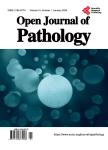Streptococcal Antibody Probe Crosses the Blood Brain Barrier and Interacts within the Basal Ganglia
Streptococcal Antibody Probe Crosses the Blood Brain Barrier and Interacts within the Basal Ganglia作者机构:Department of Physiology and Health Science Ball State University Muncie USA
出 版 物:《Open Journal of Pathology》 (病理学期刊(英文))
年 卷 期:2015年第5卷第2期
页 面:42-49页
学科分类:1002[医学-临床医学] 100214[医学-肿瘤学] 10[医学]
主 题:Blood Brain Barrier Antibodies Basal Ganglia Streptococcus Rat
摘 要:Within the brain, the basal ganglia (basal nuclei) regulates wanted movement and inhibits unwanted movement. This area of the brain is intertwined with capillary beds that bring nutrients to the brain and form the blood brain barrier. During disease state, antibodies are increased in circulation and movement of these antibodies into the basal ganglia can occur. Streptococcal infection can lead to the generation of antibodies that have autoimmune activity within the brain. These antibodies have been implicated in neurological disorders. In our laboratory, an in vitro study of a monoclonal mouse antibody generated against the class 1 epitope of the M6 protein has demonstrated binding within the basal ganglia of Lewis rat brains. Here we present an in vivo study using Lewis rats injected with either the streptococcal antibody or an anti-myosin positive control. The interaction and movement of the antibody from blood vessels into the tissues of the basal ganglia was determined through the use of immunofluorescence and fluorescent microscopy and is contrasted with IgG injected and uninjected controls. Our data demonstrates that the streptococcal antibody penetrates the blood brain barrier within 24 hours (as determined by the presence of immunofluorescence outside of blood vessels) and remains significantly elevated above control values even 72 hours after injection (p 0.05). In contrast, the anti-myosin positive control was not visualized in the interstitial fluid until 48 hours post injection and was no longer significantly above control levels by 72 hours. IgG injected controls did not display movement of antibody into the brain. Therefore, the streptococcal antibody is capable of crossing the blood brain barrier and interacting with tissues of the basal ganglia.



